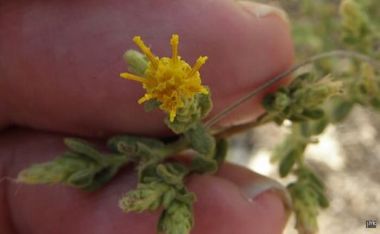New cure for diabetes? 'Goldilocks' plant in Israel found to improve insulin secretion

Scientists in Israel may have found a new, natural cure for diabetes, and it is fondly named after one of the most well-loved fairy tale characters: "Goldilocks."
Researchers from the Judea Regional Research and Development Center in Israel recently discovered that ingesting an aromatic shrub called Chiliadenus iphionoides, which is indigenous to the country, can help improve glucose absorption and insulin secretion.
This yellow-flowering shrub, more commonly known as "Goldilocks" or "sharp varthemia" in the region, can therefore be the cure diabetics are waiting for.
Plant biologist Jonathan Gorelick, scientific director of the research center, presented these findings on the "Goldilocks" plant during the 25th Judea and Samaria Research Studies Conference at Ariel University.
"This is a plant that only grows in Israel, Jordan and the Sinai, and has been used traditionally by Bedouins for controlling diabetes," Gorelick explained.
"I've been screening different Israeli plants for diabetes and this is one of the best candidates," he added.
In October 2011, Gorelick and his team already published initial findings in the Journal of Ethnopharmacology describing how rodents exhibited normal blood-glucose levels and improved sugar absorption after they were fed with the "Goldilocks" plant.
"We also did a longer-term study in which we mixed the plant with their food and showed the [positive] effects," Gorelick said.
The next challenge for Gorelick and his research team is finding the most effective way to grow the "Goldilocks" plant with the active compounds that may help cure diabetes intact.
The team of researchers is now trying to mimic conditions in the wild in greenhouses to be able to grown the "Goldilocks" plant better.
"Many medicinal plants, when grown in greenhouses, don't produce the compounds they do in the wild because those compounds are a defence response to conditions in the wild. We're trying to emulate those stimulators from the wild in the greenhouse setting," the lead researcher explained.











